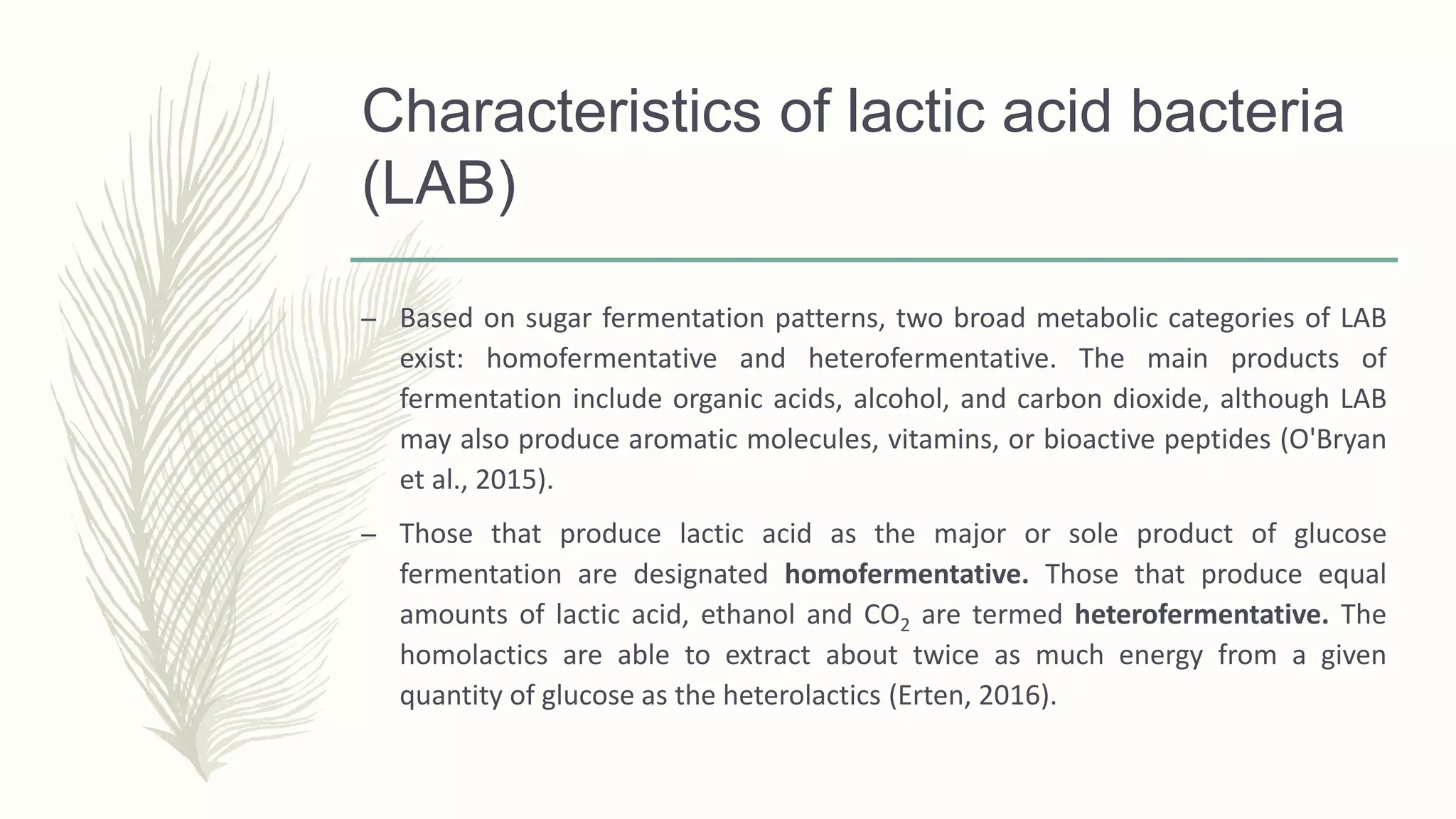Lactic acid bacteria (LAB) such as Lactobacillus, Lactococcus, Leuconostoc, and Pediococcus are important in food fermentation processes. They produce lactic acid which preserves foods and improves safety. Lactobacillus is the largest LAB genus and includes species used in dairy, bread, meat and vegetable fermentations. Lactococcus lactis is used as a starter culture for cheeses and cultured dairy. These LAB vary in their temperature and pH preferences, as well as metabolic pathways, contributing to flavor development in fermented foods through production of organic acids, aromas, and proteolysis.


























![Tetragenococcus
– . However, T. halophilus also constitutes the dominant microbiota in
concentrated sugar thick juice, a sugar-rich intermediate in the production of
beet sugar. In fact, strains of this species have been associated with thick juice
degradation, a process characterized by a pH shift from pH 9 to 5–6 and by an
increase in reducing sugar content resulting in economic losses. Tetragenococci
can be readily distinguished from pediococci mainly by their high salt tolerance
(depending on the species, from 6.5% to 25% NaCl [w/v]) and ability to grow at
high pH values up to 9.0 but not at pH 5.0 (LAHTINEN et al., 2011).](https://image.slidesharecdn.com/lacticacidbacteriausedasstarterculturesinfoodsandtheirproperties-180712114812/75/Lactic-acid-bacteria-in-food-industry-27-2048.jpg)








